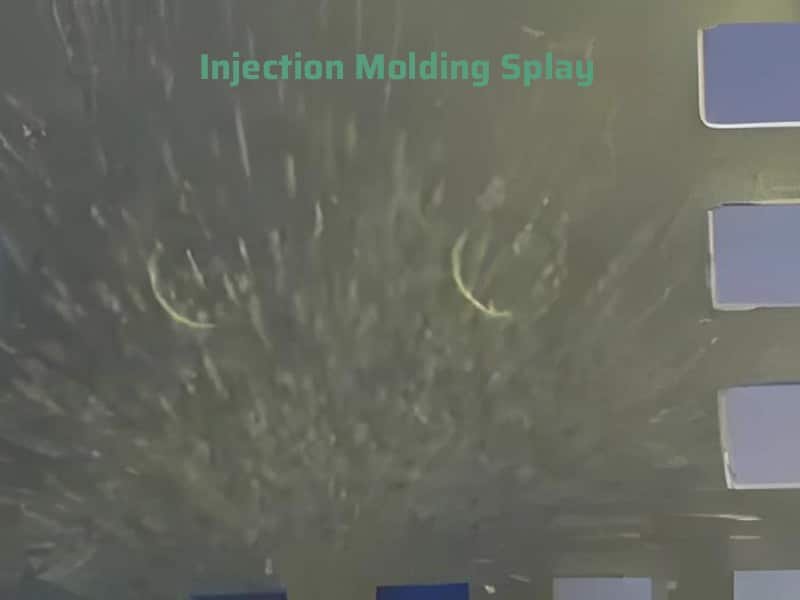In the food and beverage industry, safety is paramount. Every component that comes into contact with food must meet stringent standards to prevent contamination and protect consumers. This is where food-grade plastics play a crucial role. But what exactly constitutes “food-grade,” and how do you ensure you’re using the right materials for your products?
What is Food Grade Plastic
Food-grade plastics refer to materials that have been rigorously tested and certified to be safe for contact with food. Unlike standard plastics, food-safe plastics are manufactured under strict guidelines to minimize the risk of harmful chemicals leaching into food products. Using non-food-grade plastics can lead to serious health hazards, compromising product safety and potentially damaging your brand’s reputation.
Compliance with regulations such as those set by the FDA in the United States and EU 10/2011 in Europe is not just a best practice—it’s a necessity. As a dedicated injection molding manufacturer, Erye Plastic Products understand the critical importance of these standards and are committed to providing solutions that meet and exceed them.
Common Food-Grade Materials Options
Choosing the right food-grade plastic is essential for the success and safety of your product. Several materials are commonly used in injection molding for food contact applications, each with its unique properties:
PET
Polyethylene Terephthalate, commonly known as PET or PETE, is a clear, strong, and lightweight plastic primarily used for single-use beverage bottles and food jars. Its clarity allows consumers to see the product inside, and its strength provides structural integrity. However, while recyclable, it’s generally recommended for single-use applications due to the potential for leaching with repeated use or exposure to heat.
HDPE
High-density polyethylene, or HDPE, is a durable and chemical-resistant plastic that finds widespread use in food packaging. Its robust nature makes it ideal for milk jugs, juice bottles, and larger food storage containers, ensuring that contents are well-protected. HDPE food-safe plastic is considered a safe and reliable choice for food-grade applications.
LDPE
Low-density polyethylene, known as LDPE, is a flexible plastic commonly used for squeeze bottles, bread bags, and food wraps. LDPE food-safe plastic’s flexibility allows for easy dispensing and packaging, and it’s considered safe for food contact, though it lacks the rigidity of HDPE.
PVC
Polyvinyl Chloride, or PVC, is a versatile plastic with specialized food-grade applications. When used in its unplasticized form (uPVC), it can be employed in specific food packaging and piping systems. PVC is food safe plastic, however, the presence of plasticizers in some PVC formulations raises concerns, leading to strict regulations for food-grade PVC.
PP
Polypropylene, or PP, is a tough and heat-resistant plastic that is widely used for yogurt containers, microwavable food containers, and reusable food storage. Polypropylene food safe has the ability to withstand high temperatures makes it a very safe option for food-grade applications, particularly for items that require heating.
PC
Polycarbonate, or PC, is a strong and transparent plastic that was historically used for reusable water bottles and baby bottles. However, concerns about Bisphenol A (BPA) leaching have led to a shift towards BPA-free alternatives like Tritan. Despite this, PC remains relevant in food service applications, such as food trays, due to its durability and clarity.
Tips
When choosing suitable food-grade plastics, it’s important to remember that:
- “Food-grade” status is dependent on adherence to regulations like those from the FDA.
- Material properties can vary between grades of the same plastic.
- Always refer to manufacturer specifications and regulatory guidelines for accurate information.
Regulatory Compliance and Certifications
Navigating the complex landscape of food safety regulations can be challenging. Staying compliant with standards like FDA regulations and EU 10/2011 is crucial for ensuring your products are safe for consumers. Material certifications, such as NSF and ISO 22000, provide further assurance of quality and safety. These certifications demonstrate that the materials and manufacturing processes have been independently verified to meet strict criteria. Good Manufacturing Practices (GMP) also play a vital role in maintaining the highest standards of hygiene and safety throughout the production process.
Partnering with a Reliable Injection Molding Manufacturer
Using food-grade plastics is not just about meeting regulatory requirements—it’s about protecting consumers and building trust in your brand. By choosing the right materials and partnering with a reliable manufacturer, you can ensure that your products are safe, compliant, and of the highest quality.
At Erye, we specialize in providing high-quality, compliant solutions for the food and beverage industry. We are committed to customer satisfaction and offer comprehensive support throughout the entire production process, from material selection to final product delivery. We are here to help you navigate the complexities of food-grade plastics and provide the solutions you need to succeed. Contact us and get a quote today!
FAQs
ABS (Acrylonitrile Butadiene Styrene) plastic is not inherently food-safe in its standard form. It’s a tough, versatile material great for injection molding, but its chemical makeup—acrylonitrile, butadiene, and styrene—can leach substances under conditions like heat or acidity, making it unsuitable for food contact unless modified. Most ABS isn’t FDA- or EU-compliant for food use out of the box.
However, by tweaking the formulation with safe additives, ABS material can be engineered to meet food-grade standards.
Food-safe plastic is specifically designed to be safe for direct food contact, free from harmful chemicals like BPA that could leach into food. It meets strict standards from agencies like the FDA or EU, ensuring no toxic substances migrate during use. Common examples include polypropylene (PP) for containers, polyethylene (PE) for bags, and PET for bottles.
"Food-grade" is often used more formally in manufacturing or regulatory settings to denote certification, while "food-safe" might be a broader, more casual term.
Yes, polyethylene (PE) is widely considered food-safe and is one of the most commonly used food-grade plastics. Available in forms like High-Density Polyethylene (HDPE) and Low-Density Polyethylene (LDPE), it’s non-toxic, resistant to chemicals, and doesn’t leach harmful substances into food under normal conditions. It meets FDA and EU standards for food contact, making it ideal for plastic items like bottles, caps, and packaging films.







